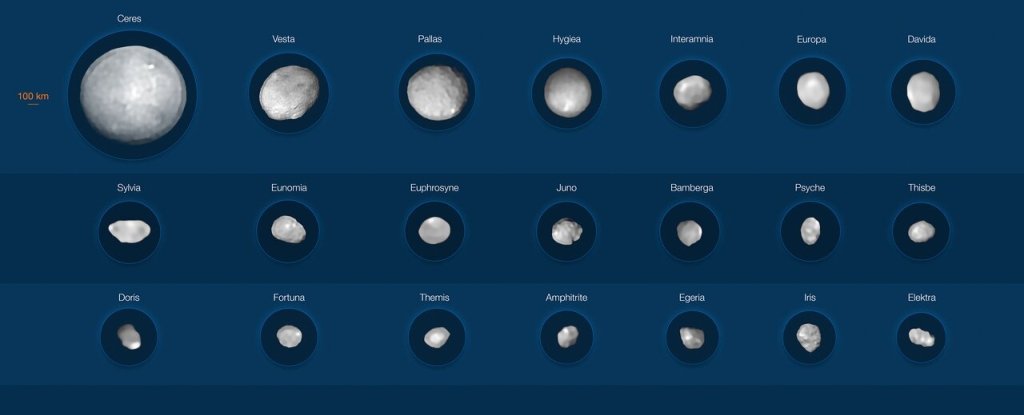
Oct 12, 2021
1 min, 12 secs
If there's one thing our Solar System doesn't have in short supply, it's rocks.
An international team of astronomers has used the European Southern Observatory's Very Large Telescope to image 42 of the largest objects that hang out in the asteroid belt between Mars and Jupiter.
"Only three large main belt asteroids, Ceres, Vesta and Lutetia, have been imaged with a high level of detail so far, as they were visited by the space missions Dawn and Rosetta of NASA and the European Space Agency, respectively," said astronomer Pierre Vernazza of the Laboratoire d'Astrophysique de Marseille in France.Earth's density, for context, is 5.51 grams per cubic centimeter. The least dense asteroids had densities around 1.3 grams per cubic centimeter, around the same density as coal, suggesting a carbonaceous, porous composition. The most dense were Psyche and Kalliope, with densities of 3.9 and 4.4 grams per cubic centimeter respectively, which is more dense than diamond, suggesting a stony-iron composition..This suggests that the objects in the asteroid belt likely came from different regions of the Solar System before ending up where they are now, the researchers said."ELT observations of main-belt asteroids will allow us to study objects with diameters down to 35 to 80 kilometers, depending on their location in the belt, and craters down to approximately 10 to 25 kilometers in size," Vernazza said"Having a SPHERE-like instrument at the ELT would even allow us to image a similar sample of objects in the distant Kuiper Belt